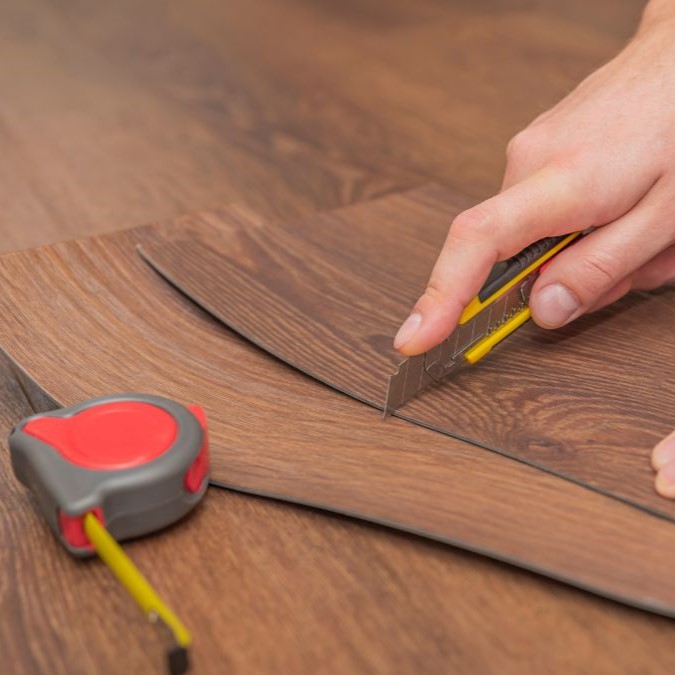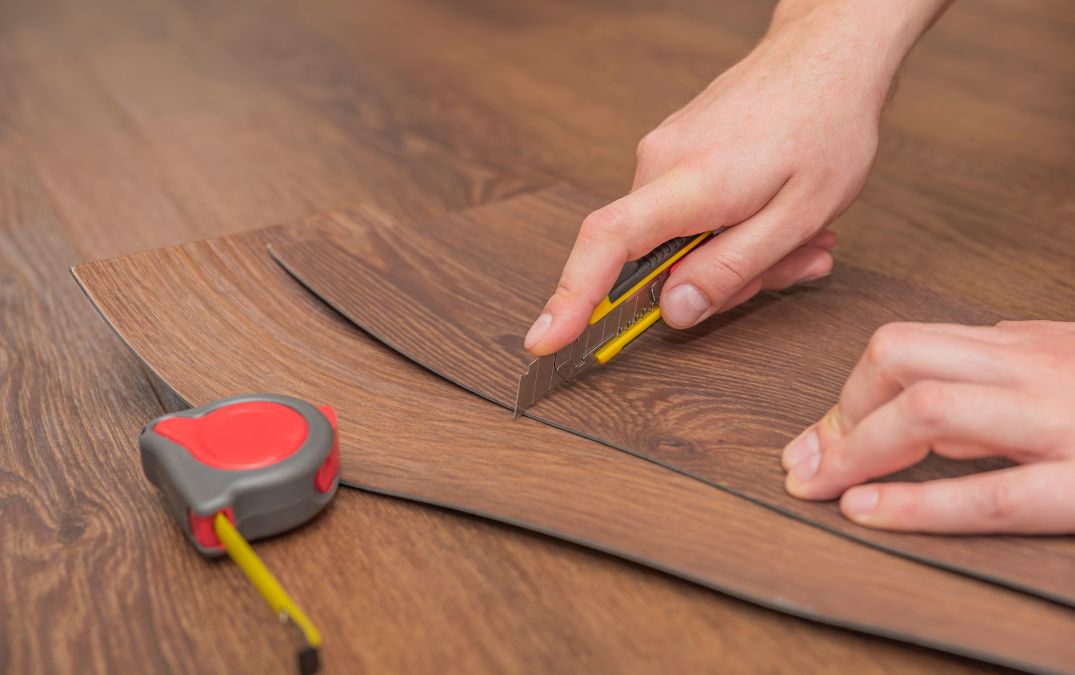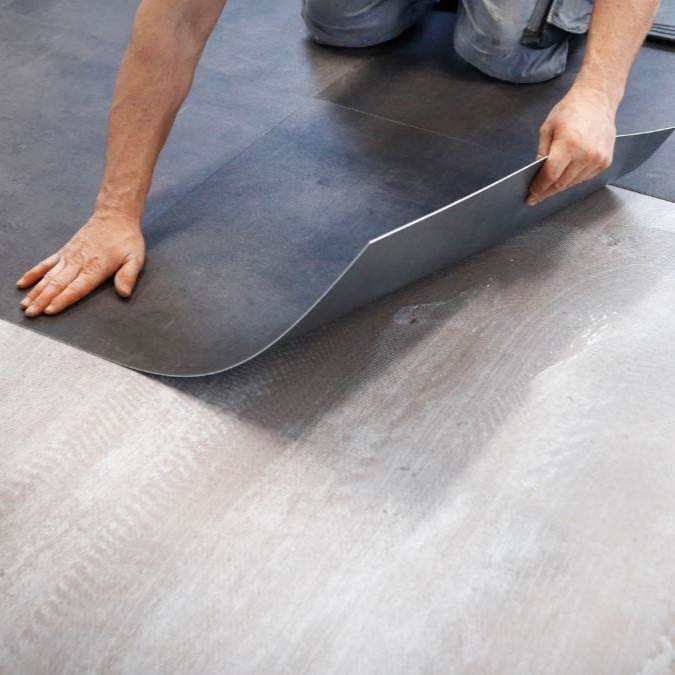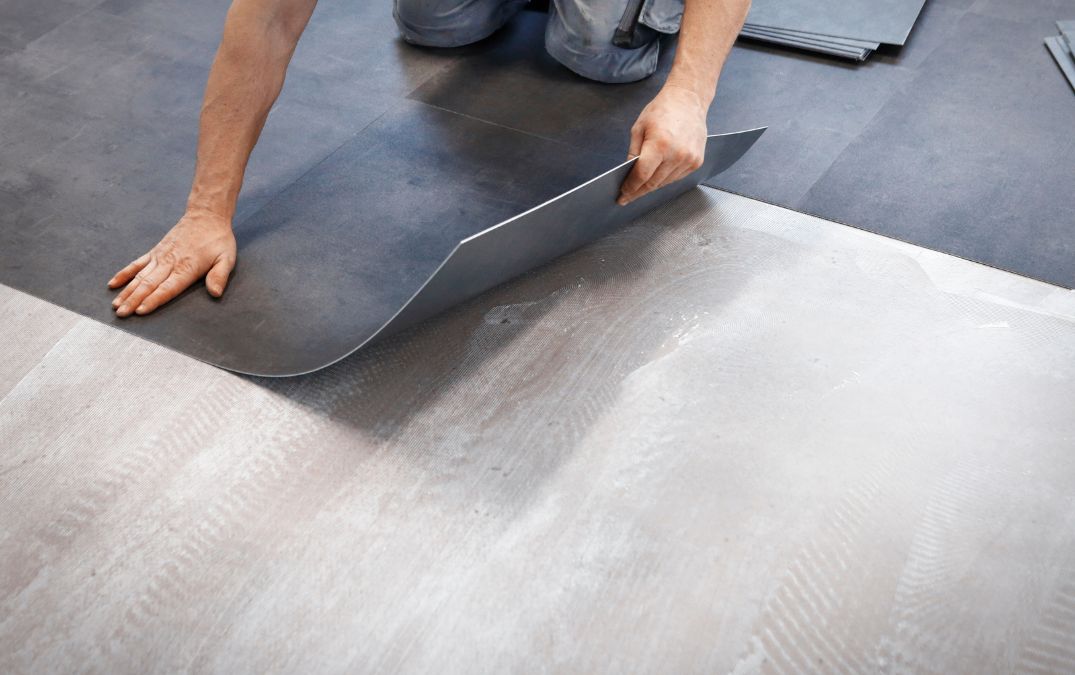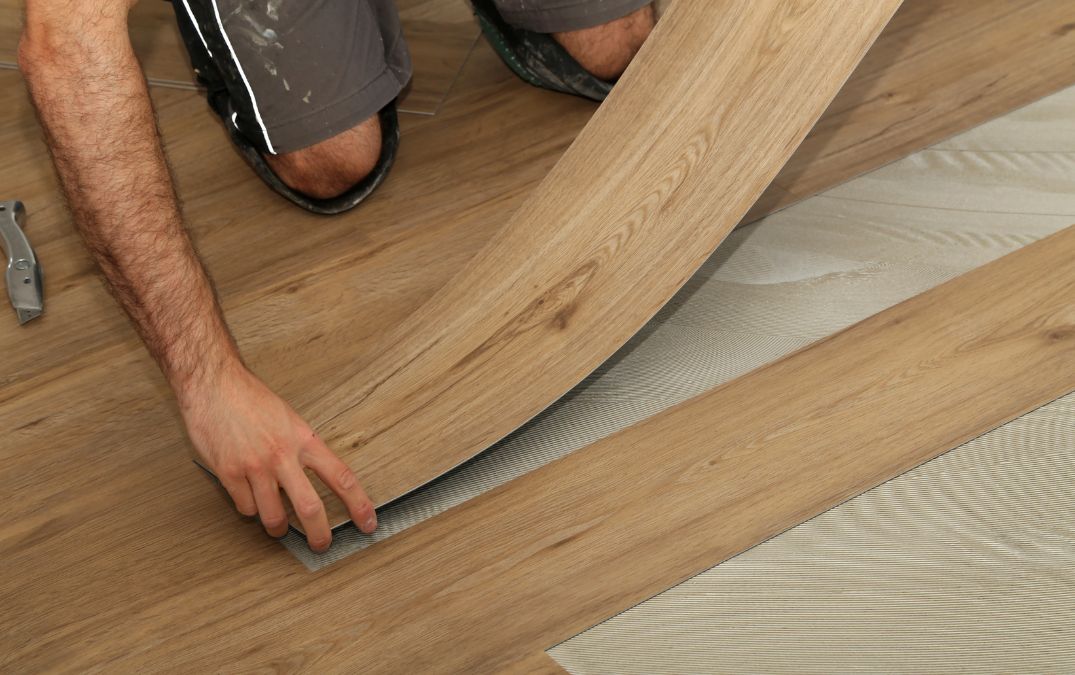Preparing the concrete floor to lay vinyl
Give it a good sweep, and then go over it with a vacuum to make sure you’ve got every last speck. If you’ve got any stubborn stains or grease spots, tackle them with a degreaser and a scrub brush. The goal here is a spotless surface that ensures the vinyl adheres properly.
If you have any cracks or holes in the concrete, use a concrete patching compound to fill in the gaps. Smooth it out with a trowel and let it dry completely.
Grab a long spirit level and check the entire area. If you find any low spots or uneven areas, use a self-leveling compound. Mix it up according to the instructions, pour it over the problem areas, and let it find its level, you'd be surprised.
